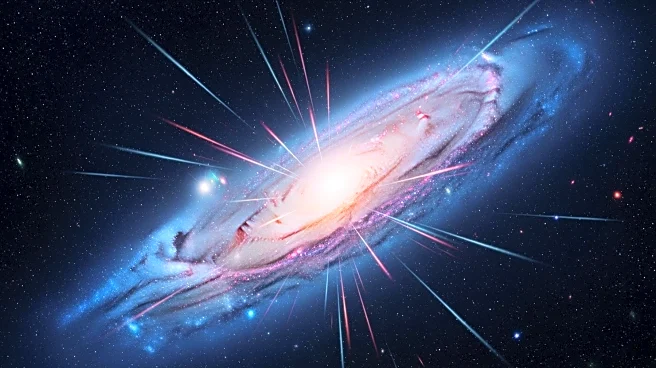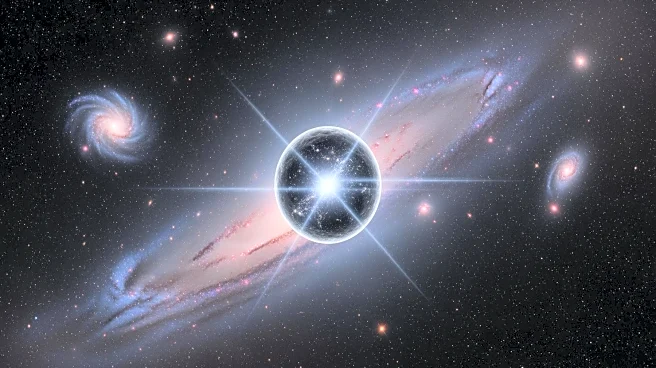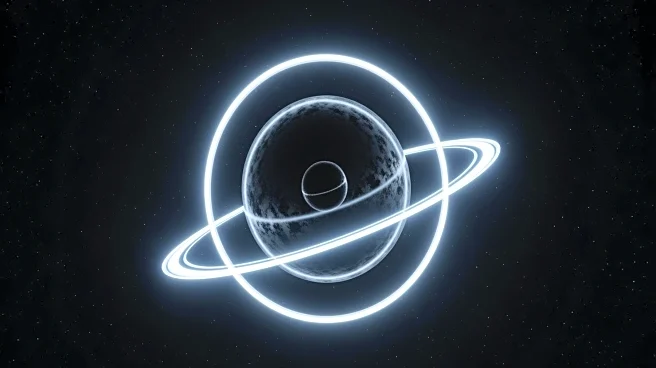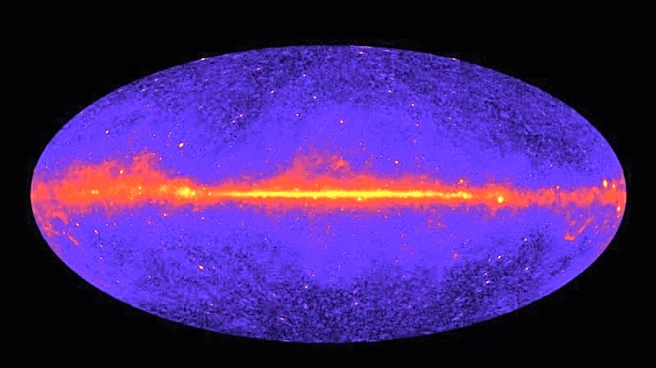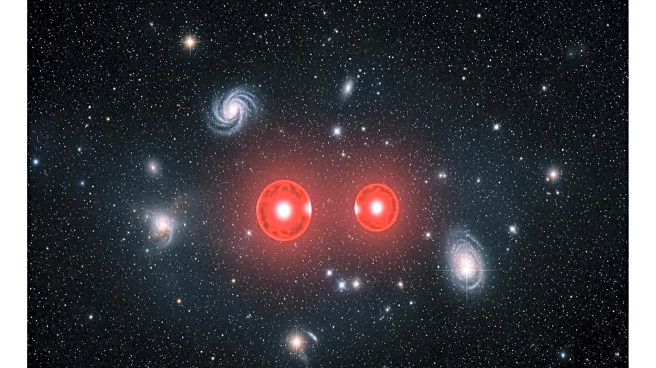What's Happening?
A new study suggests that gamma rays detected near the center of the Milky Way could be evidence of dark matter. Scientists have long hypothesized that dark matter, an invisible substance, constitutes
a significant portion of the universe. The Fermi Gamma-ray Space Telescope recorded excess gamma rays, which may result from dark matter particle collisions. Two main hypotheses exist: the gamma rays could be from dark matter or from millisecond pulsars. Advanced simulations indicate both scenarios are equally plausible, with gamma rays from dark matter collisions matching signals recorded by the Fermi satellite.
Why It's Important?
Confirming dark matter's existence would be a monumental breakthrough in physics, potentially explaining gravitational effects observed in the universe. Dark matter's elusive nature has made direct detection challenging, but indirect evidence through gamma rays could validate its presence. This discovery would impact scientific understanding of cosmic phenomena and drive advancements in technology and research methodologies. It could also influence public policy regarding space exploration and funding for scientific research.
What's Next?
The Cherenkov Observatory, set to become operational in 2026, may provide the necessary data to distinguish between gamma-ray emissions from dark matter and pulsars. This could lead to a definitive confirmation of dark matter, resolving a major scientific mystery. Researchers anticipate that this observatory will enhance our ability to study cosmic phenomena and contribute to the development of new theories in astrophysics.
Beyond the Headlines
The study of dark matter touches on philosophical questions about the universe's composition and the nature of reality. Confirming its existence could challenge existing scientific paradigms and inspire new theoretical frameworks, influencing both scientific and cultural perspectives.



